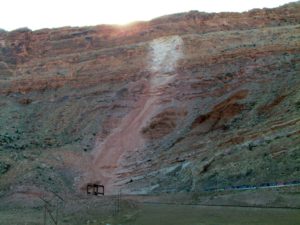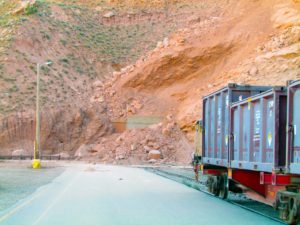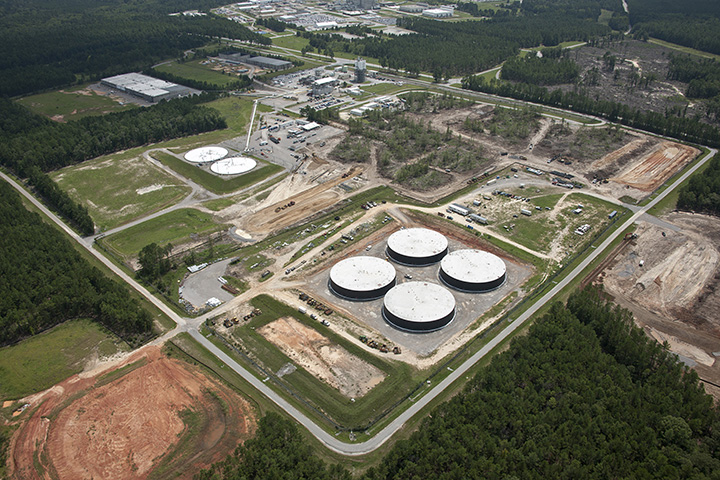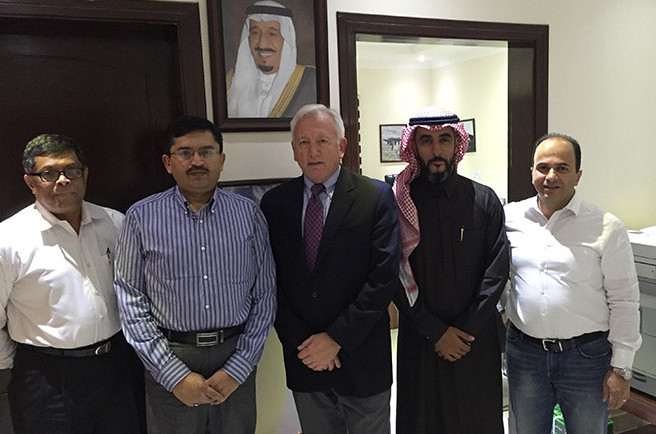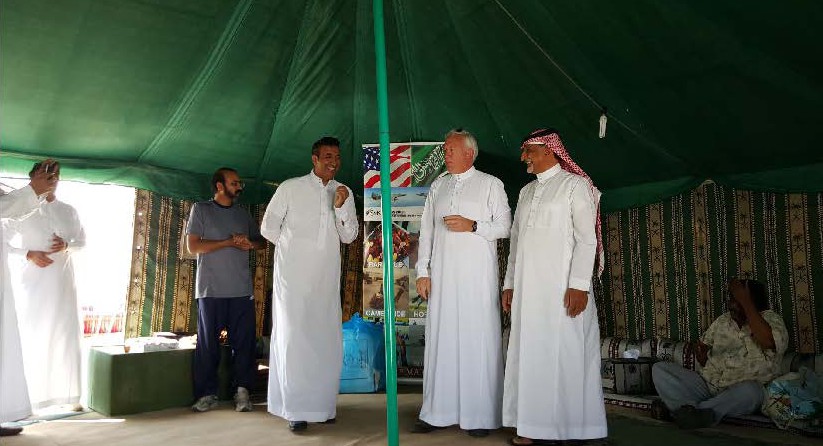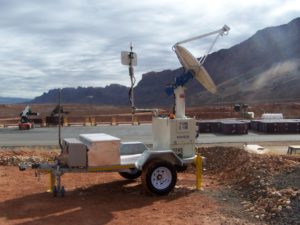
Rockslide in Utah slows remediation of Uranium Tailings
“Everyone on the Team, from training to field services, pitched in to accomplish a project-critical activity in a very short time. We are incredibly proud of their work.” -Tony Amadeo, President of S&K Aerospace.
An S&K Aerospace team has been recognized for their outstanding support to the U.S. Department of Energy (DOE) in response to a rockslide that took place at the site of a large uranium tailings cleanup project. The DOE Office of Environmental Management has managed the cleanup of the Moab site under the Uranium Mill Tailings Remedial Action (UMTRA) project since it assumed site ownership in 2001. S&K Aerospace is one of two prime contractors for DOE on the project.
Rail transport of the tailings was suspended for almost two months after an estimated 4,500 cubic yards of debris fell from the steep hillside onto the rail bench near the project loading area on November 18, 2014. Luckily, no one was injured and loading operations weren’t directly impacted, but DOE suspended rail shipments until a risk analysis of the hillside and potential future rockslides could be evaluated.
This is when S&K’s Technical Assistance Contractor (TAC) Team became instrumental in supporting DOE. Initially the staff secured rockfall experts and monitoring equipment to minimize impacts from future rockfalls. This included consulting with Departments of Transportation from Colorado and Utah and others familiar with rockslides that frequently occur in that part of the country.
Based on their analysis, experts divided the 2,000-foot stretch of rail bench into three zones. Furthest away from the November rockslide, Zone 3 was deemed safe to restart loading operations in mid-January because the lower portion of the slope is flatter, creating a natural “catchment” for rockfall. Trains carrying the tailings were reduced from the normal 136 containers to 64 containers so that they didn’t extend beyond the safety of Zone 3. The trains have since been extended after implementation of additional safety measure, and the trains are currently 104 containers.
One of the safety measures was the procurement by the TAC Team of a radar system to monitor movement on the hillside. The radar unit was acquired in an expedited manner from a South African company. The unit detects and records rock movement, which accelerates just prior to a rockfall. It operates continuously and can be monitored remotely. The unit functions by sweeping the horizontal and lateral area of the hillside while emitting a radio signal and measuring the time for the signal return. Several factors affect the size of rock the radar unit is able to detect, including lateral and vertical distance from the unit, reflectivity of the material, angle of the rock surface, and wind speed.
The unit was installed in mid-January and several TAC Team members attended a weeklong training course in operation and maintenance of the radar unit. Effective use of the unit on the project began in mid-March with adoption of a radar operations procedure.
A Radar Team consisting of TAC and Remedial Action Contractor staff monitor the hillside and report daily on movement. Much of the “movement” detected thus far has been associated with environmental conditions, such as how the hillside responds to changes in temperature and humidity and vegetation that can appear to the unit as movement. The project has dealt with several hiccups as it learns how to set appropriate warning thresholds on the radar unit and address alarms associated with the environmental conditions. “We’ve learned
a lot and have a lot more to learn,” said Joe Ritchey, who serves as hillside monitoring manager. “The radar unit is intended to provide warning of a major rockfall. Smaller rockfalls can be mitigated by increasing the distance between workers and the hillside in the highest risk area.”
Beyond acquisition of and key involvement in the radar unit, the TAC Team also supports evaluation of the risk associated with the hillside by performing visual geological inspections, rockfall modeling, and probability analysis.
The DOE Federal Project Director also acknowledged the TAC Team’s hard work in response to the rockslide. The project is still performing assessments and preparing and implementing work controls in an effort to safely return to “normal” operations.


